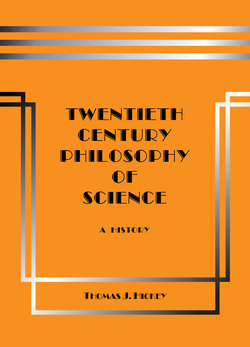Читать книгу Twentieth-Century Philosophy of Science: A History (Third Edition) - Thomas J. Hickey - Страница 77
На сайте Литреса книга снята с продажи.
3.46 Observation and Test Execution
ОглавлениеFor the execution of the test all the statements involved have their quantification changed from universal to particular. The semantics for all the language involved in a test is defined by the universally quantified statements, since particularly quantified language does not define semantics. The particularly quantified theory statements make the prediction for the test. All the language needed to realize the initial conditions together with the test-outcome statements have their semantics defined by the universal statements in the test design. The particularly quantified statements in the test design describing the subject of the theory are observation statements. For a mathematically expressed theory particular logical quantification is accomplished by assigning values by measurement to the theory’s descriptive variables to implement the test’s initial conditions needed to calculate the one or several prediction variables, and then calculating the predicted numerical values.
After the test is executed, the statements in the test design reporting the test outcome are observation statements describing the observed results of the test. The prediction statements are not as such observation statements unless the test outcome is nonfalsifying. If the test is falsifying, the prediction statements are merely rejected language. For a mathematically expressed theory a nonfalsifying test outcome is a predicted magnitude that is manifestly larger than the estimated measurement error, such that the prediction is deemed to be as the test-outcome statements describe. Then the test is effectively decidable as nonfalsifying. Otherwise the test is falsifying, and the prediction values are simply rejected as erroneous prediction values.
